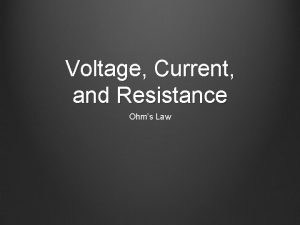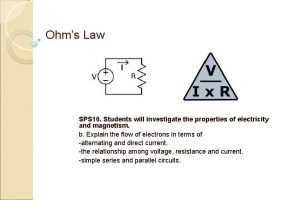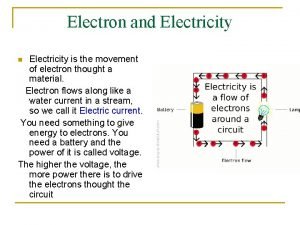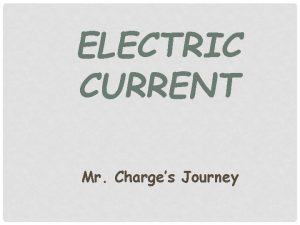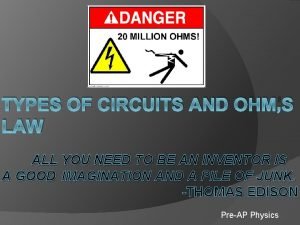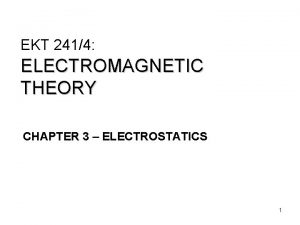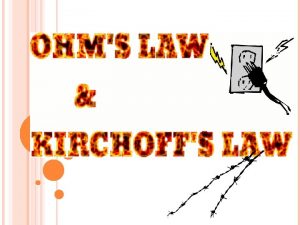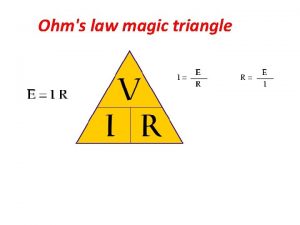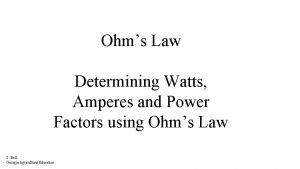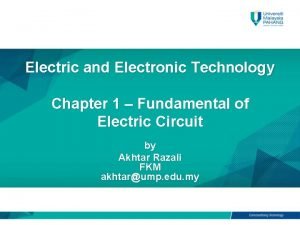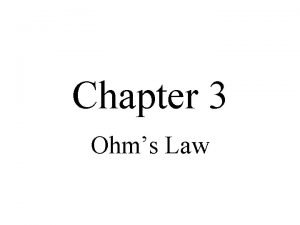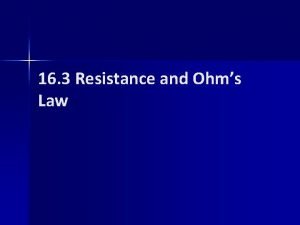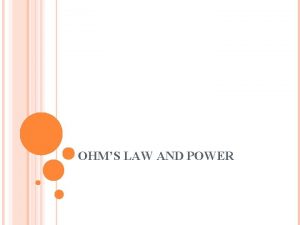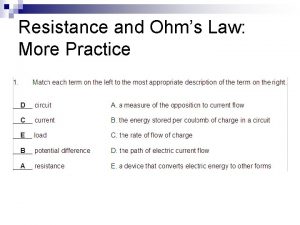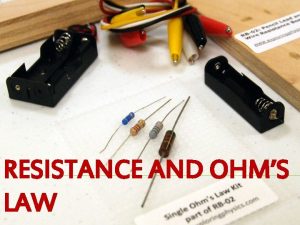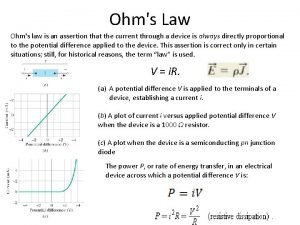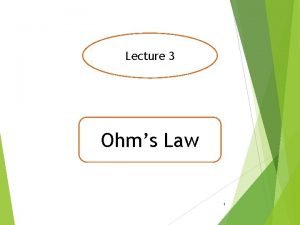Physics Unit Part 3 Resistance and Ohms law












- Slides: 12

Physics Unit - Part 3 Resistance and Ohm’s law

Resistance Intro: In Your INBs… Discuss with a partner: What does resistance mean to you? Write down your definition of resistance in INB Provide two real-life examples and write them in your INB What are three things that could affect the amount of resistance in a material in circuit. Write what you think in your INB

Resistance Intro: In Your INBs… Ohm’s Law simulator Predict: What will happen to the current when the resistance is increased. Observe: What happened to the current? Infer: Why do you think this occurred? Make an equation: How is resistance, voltage, and current related? Try to make an equation that relates the three.

What is Resistance? Resistance describes the amount that current is hindered by a load. Any material that slows down the flow of electrons and converts electrical energy into other forms of energy. Example – electrons through a bulb converts the electrical energy into light energy. Example – wires have very little resistance to the flow of electrons.

Resistors Some electronic devices have specific resistors. Why? Used to protect people from devices overheating or to decrease sound What devices have resistors? Ovens, toasters, IPods, microwaves, phones, TVs, etc…

Resistance and Current How does resistance relate to current? Voltage is directly proportional to current; therefore, as the voltage increases, so does the current (I). Now, if you use batteries with equal voltage: An electric circuit that has a large resistance will allow less current to flow through. An electric circuit that has lower resistance will allow more current to flow.


Ohm’s Law R=V I R = resistance (ohms - Ω) V = voltage (volts – V) I = current (amperes – A) V R I

Calculations Protocol Calculations using Ohm’s Law 1. Write formula 2. Substitute (insert) numbers including proper units 3. Work vertically with the = signs lined up 4. Put a box around the final answer

Sample Calculations Question 1. The current through a load in a circuit is 1. 5 A. If the potential difference across the load is 12 V, what is the resistance of the load? R=V I R = 12 V 1. 5 A R = 8. 0 Ω The resistance of the load is 8. 0 Ω.

Sample Calculations Question 2. The resistance of a car headlight is 15 Ω. If there is a current of 0. 80 A through the headlight, what is the voltage across the headlight? V = IR V = (0. 80 A)(15 Ω) V = 12 V The voltage across the headlight is 12 V.

Sample Calculations Question 3. A 0. 06 V potential difference is measured across a load that has a resistance of 15 Ω. What is the current through this load? I=V R I =. 060 V 15 Ω I = 0. 004 A The current through this load is 0. 004 A.
